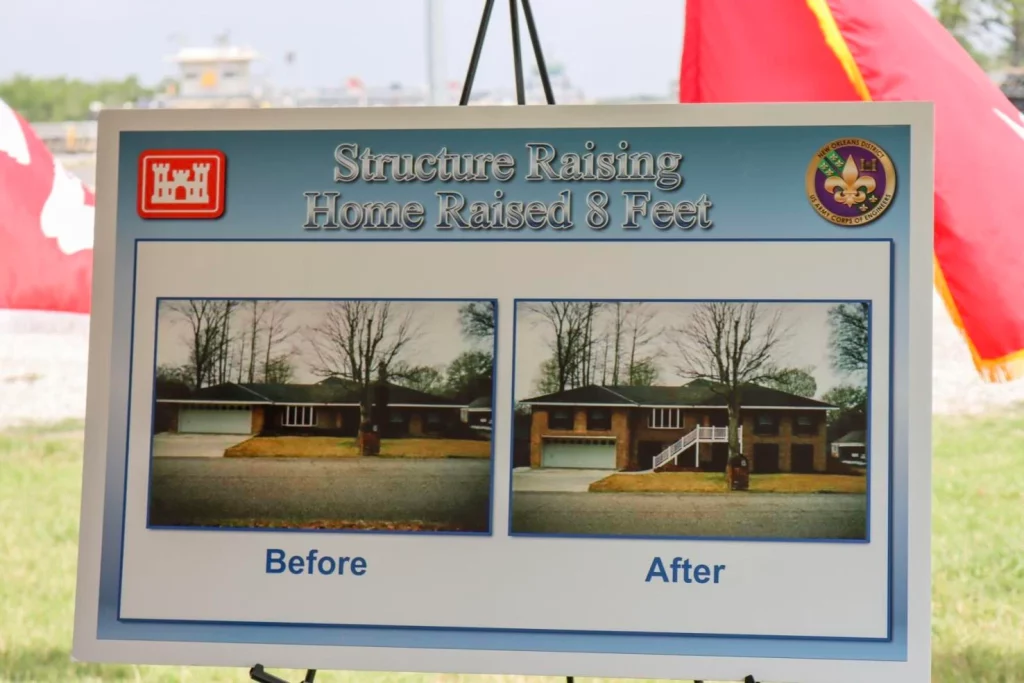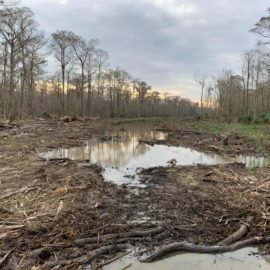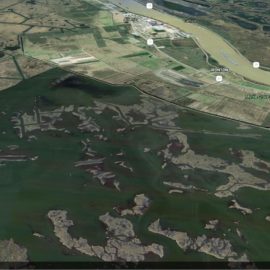
Commonly flooded areas where homes routinely flood now ccan raise their homes to stsy.
The elevation of as many as 1,000 homes at risk of hurricane storm surge flooding in Cameron, Calcasieu and Vermilion parishes could begin by mid-2024, thanks to an agreement signed in Lake Charles by state and Army Corps of Engineers officials. The project partnership agreement commits the state, through its Coastal Protection and Restoration Authority, to pay 35% of the $6.8 billion cost of the broader, multi-year Southwest Coastal Louisiana hurricane and storm damage risk reduction and ecosystem restoration project. The state’s share of the cost would be about $2.4 billion. Congress has already appropriated $286 million from the 2021 Infrastructure Investment and Jobs Act and $10 million from other community projects funding legislation for the first phase of the elevation and floodproofing work. Another $10 million has been appropriated by Congress for the first ecosystem restoration projects, including 6 miles of shoreline protection at Rockefeller Wildlife Refuge near Grand Chenier, La. The partnership agreement signing on Wednesday allows all of those funds to be spent. “Today’s announcement is transformative for the people of southwest Louisiana who have held strong in the face of some of the worst storms the country has ever seen,” said Gov. John Bel Edwards, in a news release announcing the signing.
nola.com

(Army Corps of Engineers)
Flooding causes devastation and this will help.
“We need to look no further back than Hurricanes Laura and Delta to recall the devastation caused to these coastal communities here in southwest Louisiana,” said Major Gen. Diana Holland, commander of the Corps’ Vicksburg, Miss.-based Mississippi Valley Division. She said officials with the Corps’ division office and Rock Island, Ill. district office will work with New Orleans district officials in overseeing the work. The home elevation funds are part of about $1.3 billion that will be dedicated to “storm risk reduction,” which also includes floodproofing businesses and possibly buying out or relocating some structures. The risk reduction efforts are targeting buildings on land within the 25-year floodplain in the three parishes, meaning the chance of storm surge and tidal flooding is 4% a year, but actually has a 71% chance of occurring within the life of a 30-year mortgage. Additional funds must still be appropriated to elevate as many as 2,462 additional homes, floodproofing 342 non-residential structures to 3 feet above ground, and building berms up to 6 feet above ground to protect 157 warehouses.

(Coastal Protection and Restoration Authority)
The homes will be raised to an average of 5 feet.
The homes will be raised an average 5 feet, with a maximum elevation of 13 feet, bringing their elevations to a level providing protection from surge flooding that has a 1% chance of occurring, a so-called 100-year event, in 2075. Officials said 17 structures in Vermilion Parish and 10 in Calcasieu Parish already have gone through initial clearances for the elevation work. The Corps will host public meetings in late summer to provide homeowners with additional information on the program and an opportunity to register for the elevation program, with the first homes to be elevated beginning in June 2024. Another $5.5 billion will eventually be spent on additional environmental restoration projects aimed at restoring fresh and brackish marsh areas along the Calcasieu and Vermilion rivers, including:
- Seven projects restoring about 6,408 acres of brackish and saline marsh;
- Five shoreline protection measures, protecting a total of 6,135 acres of marsh;
- 35 chenier ridge reforestation measures, using live oak and hackberry, on 1,413 acres.
This should save more money in the long run.



